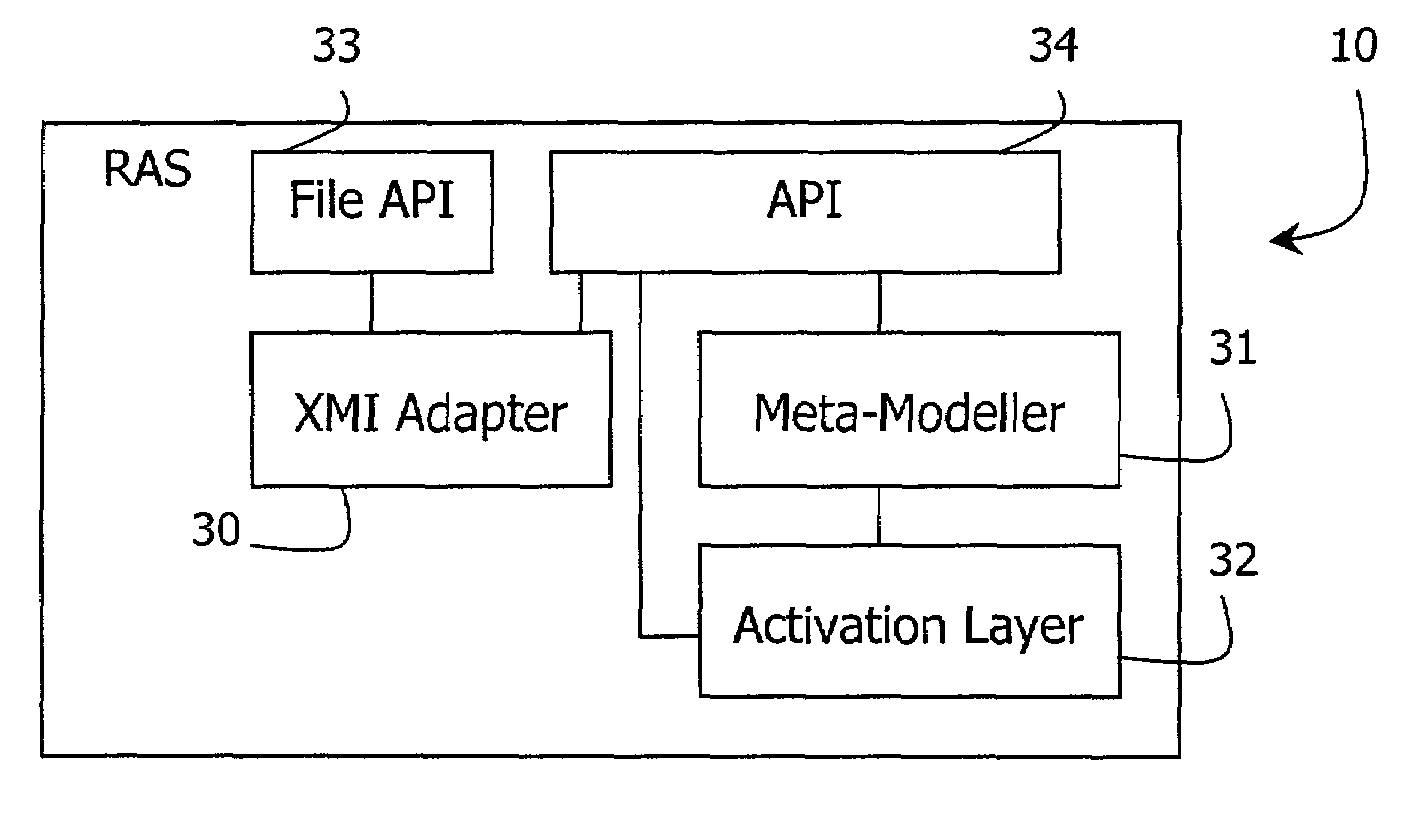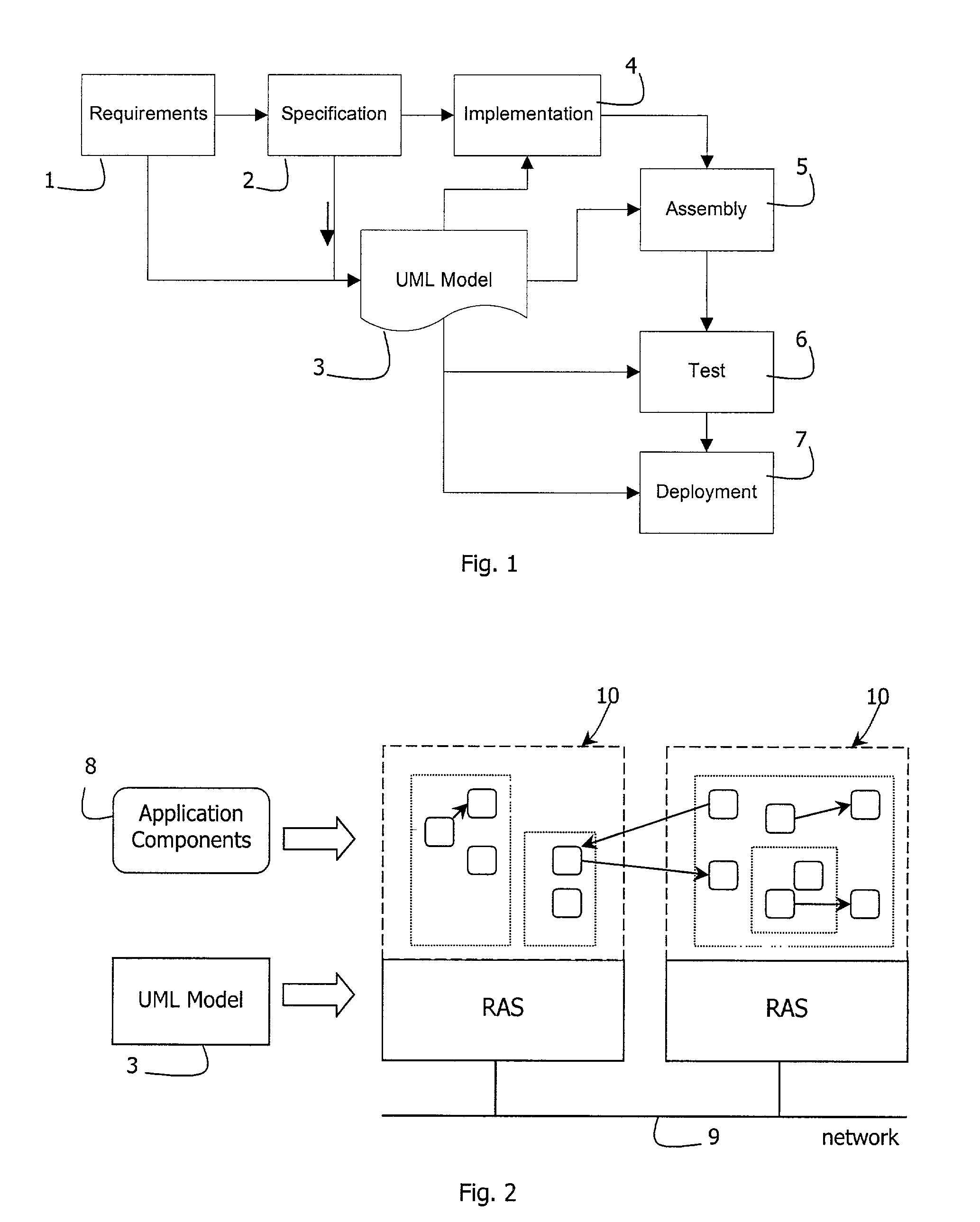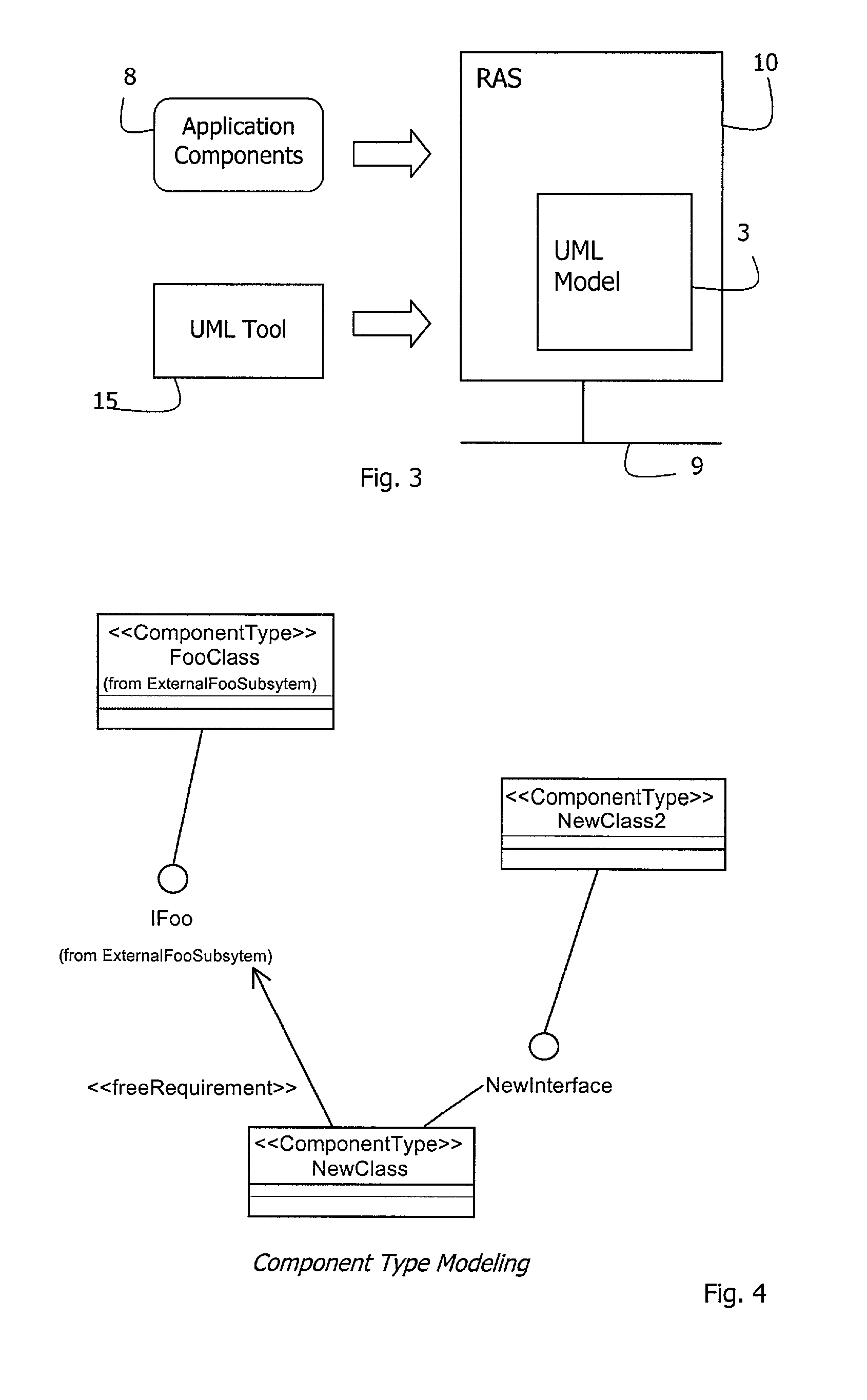Software development process
a software development and process technology, applied in the field of software development process, can solve the problems of hardening linkage, difficult manipulation of locking modules together, and delivering flexible software, and achieve the effect of improving flexibility
- Summary
- Abstract
- Description
- Claims
- Application Information
AI Technical Summary
Benefits of technology
Problems solved by technology
Method used
Image
Examples
Embodiment Construction
Brief Description of the Drawings
[0067]The invention will be more clearly understood from the following description of some embodiments thereof, given by way of example only with reference to the accompanying drawings in which:
[0068]FIG. 1 is a high level diagram illustrating a software development process of the invention;
[0069]FIGS. 2 and 3 are diagrams showing execution of the system;
[0070]FIGS. 4, 5, and 6, are diagrams illustrating components and how they are modelled;
[0071]FIG. 7 is a diagram illustrating structure of a Runtime Architecture Service (RAS);
[0072]FIG. 8 is a class diagram of an XMI adapter of the RAS;
[0073]FIGS. 9 to 14 are class diagrams illustrating various aspects of the system;
[0074]FIGS. 15 to 20 are diagrams illustrating binding and unbinding of components.
DESCRIPTION OF THE EMBODIMENTS
[0075]FIG. 1 illustrates a development process as a set of development phases. In an iterative development process it may be assumed that these phases will occur in parallel ...
PUM
 Login to View More
Login to View More Abstract
Description
Claims
Application Information
 Login to View More
Login to View More - R&D
- Intellectual Property
- Life Sciences
- Materials
- Tech Scout
- Unparalleled Data Quality
- Higher Quality Content
- 60% Fewer Hallucinations
Browse by: Latest US Patents, China's latest patents, Technical Efficacy Thesaurus, Application Domain, Technology Topic, Popular Technical Reports.
© 2025 PatSnap. All rights reserved.Legal|Privacy policy|Modern Slavery Act Transparency Statement|Sitemap|About US| Contact US: help@patsnap.com



